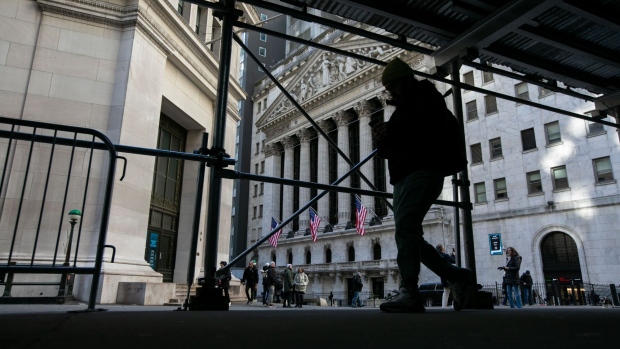Apr 17, 2024
Fed Beige Book Sees Slight Growth, Moderating Wage Pressure
, Bloomberg News

(Bloomberg) -- The US economy has “expanded slightly” since late February and firms reported greater difficulty in passing on higher costs, the Federal Reserve said in its Beige Book survey of regional business contacts.
“Consumer spending barely increased overall, but reports were quite mixed across Districts and spending categories,” according to the report released Wednesday. “Several reports mentioned weakness in discretionary spending, as consumers’ price sensitivity remained elevated.”
“Another frequent comment was that firms’ ability to pass cost increases on to consumers had weakened considerably in recent months, resulting in smaller profit margins,” the Beige Book said.
The latest edition of the Beige Book was compiled by the Federal Reserve Bank of Boston using information gathered on or before April 8. The report includes anecdotes and commentary on business conditions in each of the 12 Fed districts.
Employment & Spending
The report was somewhat at odds with what recent data releases have been signaling about the US economy.
Reports on employment and consumer spending have continued to show surprising strength, and measures of inflation have remained elevated. The combination has pushed back expectations the Fed will begin cutting interest rates any time soon.
Fed Chair Jerome Powell on Tuesday said it was “likely to take longer than expected” before policy makers had enough confidence in inflation’s decline for it to lower rates.
The Beige Book noted that “price increases were modest, on average.” While raw materials costs were mixed, half of the Fed’s districts noted a pickup in energy prices. Several pointed to higher insurance rates, as well. Because of the difficulty passing these costs on to consumers and customers, profit margins were under pressure.
“On balance, contacts expected that inflation would hold steady at a slow pace moving forward. At the same time, contacts in a few Districts — mostly manufacturers — perceived upside risks to near-term inflation in both input prices and output prices,” the report said.
Most Fed districts also noted an increase in labor supply and an improved ability to retain employees, suggesting a cooling job market and less upward pressure on inflation from wages.
“Multiple Districts said that annual wage growth rates had recently returned to their historical averages,” the report said.
Read More: Powell Signals Rate-Cut Delay After Run of Inflation Surprises
--With assistance from Jarrell Dillard.
(Adds regional summaries)
©2024 Bloomberg L.P.

